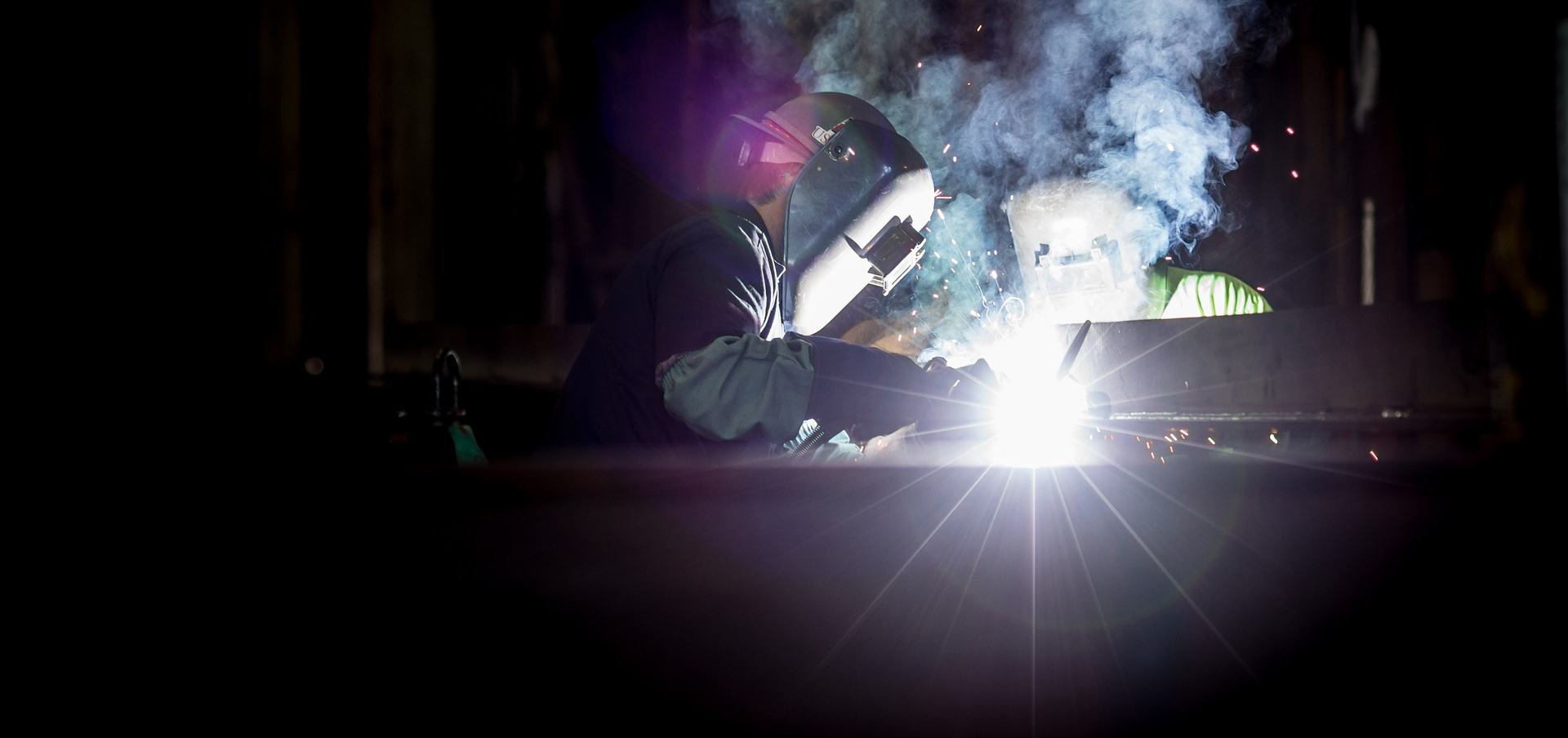The welder job description is a multi-faceted one, involving everything from mathematics to machine operation, to design and all things metalwork. If you are interested in becoming a welder, you should expect a very hands-on workday. Welding is both innovative and intricate, and therefore requires a lot of technical skill, passion, and readiness to learn more. Do you have what it takes?
Welding is one of the most in-demand careers within the manufacturing industry, with job opportunities on the rise. Nationwide, employment of welders is expected to grow 6 percent by the year 2026 – largely due to the importance and versatility of the field, says the Bureau of Labor Statistics. However, job prospects will be best for welders who are trained in the latest technologies.
To get into this growing field and meet the qualifications of leading employers’ welding job descriptions, it is important to complete the proper training and certifications. It is also important to understand what each welder job description might entail, and what you will be doing on the day-to-day.
Let’s start with the basics. The welder job description revolves around metal. Welders use a variety of different tools to cut, heat, shape, and fuse metal parts together to form a final product – pipes and car parts are just some examples. Welders also fill holes, indentations, seams, and imperfections in metal products. The job duties of a welder will vary place to place, however, welders can generally be found:
- Reading and interpreting blueprints, sketches, or specifications of a desired product
- Calculating the dimensions of metal parts to be welded
- Inspecting materials and their structures before welding
- Igniting torches or starting power supplies to heat the metals
- Monitoring the welding process through-and-through, to avoid overheating
- Setting up, operating, and maintaining equipment and high-powered machinery
- Monitoring the safety of machine operation
- Utilizing many of the hundreds
As seen in the responsibilities above, the welder job description combines elements of technical design (reading blueprints and sketches) with creative, hands-on work (using hand-held torches and tools) and mechanical operation (working more automated equipment). Not only are their duties versatile, but their workplaces can vary, as well. Welders are needed in a variety of industries, such as shipbuilding, automobile manufacturing, aerospace, gas and oil pipelines, construction, and more. According to the BLS, the welding careers most in-demand are structural workers who can help rebuild bridges, buildings, pipelines, and highways.
What is Required in the Typical Welder Job Description?
Welders are expected to be able to follow engineering sketches and designs, to accurately measure parts, to carry out welding procedures effectively, and to ensure a high standard of work. To meet the expectations of your future employers, and to stand out amongst other candidates, welding training courses are recommended.
While there are not set-in-stone requirements for welders today, most employers do prefer some level of experience and training before hiring someone for the job. Basic arc welding, for example, is a must-have technical skill desired by many potential employers. Some employers also prefer to hire candidates holding voluntary welding credentials, such as a Certified Welder or Certified Welding Fabricator. They are also looking for skills such as:
- Attention-to-detail and detailed precision work (welders should have minimal flaws in their work, and should be able to craft straight lines as well as detect changes in their metal flows)
- Manual dexterity and good hand-eye coordination (welders must have a stable hand)
- Physical stamina (many welders will ensure long periods of standing and repetitious movements)
- Physical strength (welders must be able to lift heavy pieces of metal and move equipment)
- Spatial-orientation skills (to read, understand, and interpret 2-D and 3-D diagrams)
- Technical skills (to operate manual and semiautomatic welding machinery)
The right welding program will teach you all these skills, and more, preparing you for a top-notch career as a Certified Welder. Goodwin College’s welding school, for example, can teach you everything from welding safety and fabrication to common welding methods: shielded metal arc welding, gas metal arc welding, flux core arc welding, thermal cutting. The coursework is also very hands-on, as we know that employers prefer welders who have direct welding experience. Our students conduct welding projects similar to the ones you’d conduct in an active workplace, and learn on state-of-the-art machinery such as a CNC plasma table, an innovative Bluco table, and a virtual reality welding machine.
All this training makes students cut-out for a position as a professional welder or a cutter – surpassing the welder job description. And, upon completion of our welding program, graduates are fully prepared to pursue certification or entry-level employment in the field.
Interested in starting on your path towards becoming a welder? Call Goodwin College at 800-889-3282 to learn more about our welding certificate program in Connecticut.
Goodwin University is a nonprofit institution of higher education and is accredited by the New England Commission of Higher Education (NECHE), formerly known as the New England Association of Schools and Colleges (NEASC). Goodwin University was founded in 1999, with the goal of serving a diverse student population with career-focused degree programs that lead to strong employment outcomes.

